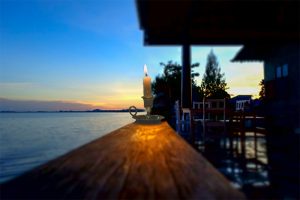Do you really need eight straight hours of sleep to feel healthy and well-rested? Evidence suggests that our ancestors flourished using a practice known as segmented sleep.
Historians and biologists both investigated how we slept in the past, both to understand daily habits back then and to understand how we should be sleeping now. Interestingly, many historical documents indicate that our ancestors followed a practice called segmented sleep, in which they slept for several hours, woke up for a while, and then slept a few hours more before waking for the day.
Sleep Patterns Then and Now
Before the advent of modern electric light, people went to bed at dark and woke with the sun. However, this is a sizable length of time in most parts of the year. Did our ancestors really sleep ten to twelve hours in fall and winter?

The practice appears to have ceased at some point in the 18th century when gas lamps and other sources of light made it possible to stay up a little later. At the same time, the Industrial Revolution occurred with its new emphasis on optimal human productivity. By the mid 19th century, complaints of sleep maintenance insomnia were becoming increasingly common. Torbjörn Åkerstedt, director of Stockholm’s Stress Research Institute points out,
“Before the light bulb we went to bed at eight o’clock and woke up a few hours later to be on the go for a while. The idea that one should sleep eight hours without interruption is a new invention which is colored by our values and modern lifestyle.”
Is Segmented Sleep Best for Human Health?
Our ancestors may have slept in two blocks, but this may have been out of necessity. Is segmented sleep actually natural? A chronobiology researcher in the 1990s set out to find the answer. Research subjects were exposed to darkness 14 hours a day, as opposed to the normal 8-10 hours. Over the course of a month, the subjects slowly transitioned to a bimodal sleep pattern on their own. They slept for the same eight total hours that are recommended, but these were broken into two blocks separated by a short period of quiet activity. The people involved in this study showed no ill health effects and reported feeling well rested.
A Cure for Sleep Maintenance Insomnia
Sleep maintenance insomnia is a common sleep disorder in which people have trouble staying asleep for more than a few hours. It is a difficult disorder to treat as well, with many people continuing to wake up every night. Given new evidence that segmented sleep is a healthy habit, sleep maintenance insomnia may be merely an inability to adhere to the very new habit of sleeping entirely in one block. The cure for sleep maintenance insomnia may be a return to the older and more natural habit of segmented sleep.
Humans evolved to have certain biological rhythms, which are now inconvenient and sometimes even impossible in our modern world. While some of us have adjusted to the relatively new challenge of sleeping in one large block, we may feel more rested if we instead adopt the ancient habit of segmented sleep.






